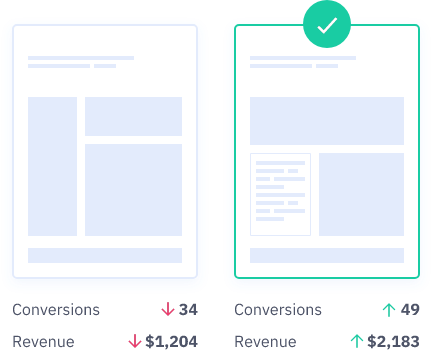Many consumers today feel like they know all of marketing’s old tricks. They expect that when a business communicates with them, it acts only in the interest of profits. A cynical customer is harder to convince and harder to close.
Affiliate marketing is 1 way brands have responded to the more savvy consumer. By working with content creators and other outlets (affiliates) to promote their products and services, companies have a new way to reach new audiences.
Meanwhile, individual creators and publishers have a new way to generate income. ActiveCampaign is no stranger to affiliate marketing—we have an affiliate partner program of our own.
In this post, we’ll cover what affiliate marketing is, how it works, and how you can get started as either an affiliate publisher or a merchant marketing your product. We’ll also explain some of the most common affiliate marketing channels and strategies.
Table of contents
- What is affiliate marketing?
- How affiliate marketers make money
- Types of affiliate marketing
- How to become an affiliate marketer
- How to become an affiliate merchant
- Best affiliate marketing channels
- Frequently asked questions
- Get started with affiliate marketing
What is affiliate marketing?
Affiliate marketing is a kind of marketing and promotion where a third-party affiliate encourages customers to buy rather than the seller appealing directly to potential customers. Typically, the affiliate will promote or market the product to customers. The brand then pays the affiliate for this promotion (often through a commission arrangement).
There are a couple of reasons brands like this arrangement:
- First, it’s a cost-effective way to outsource some of their marketing. For a small commission, the brand gains new promotional ideas and content without going through the ideation, production, and publishing process.
- Second, affiliate marketing allows brands to reach new audiences with a de facto endorsement from the affiliate, who may have a devoted following.
Affiliate marketing has steadily grown over the past decade, with affiliate spending projected to hit $8.2 billion in 2022.
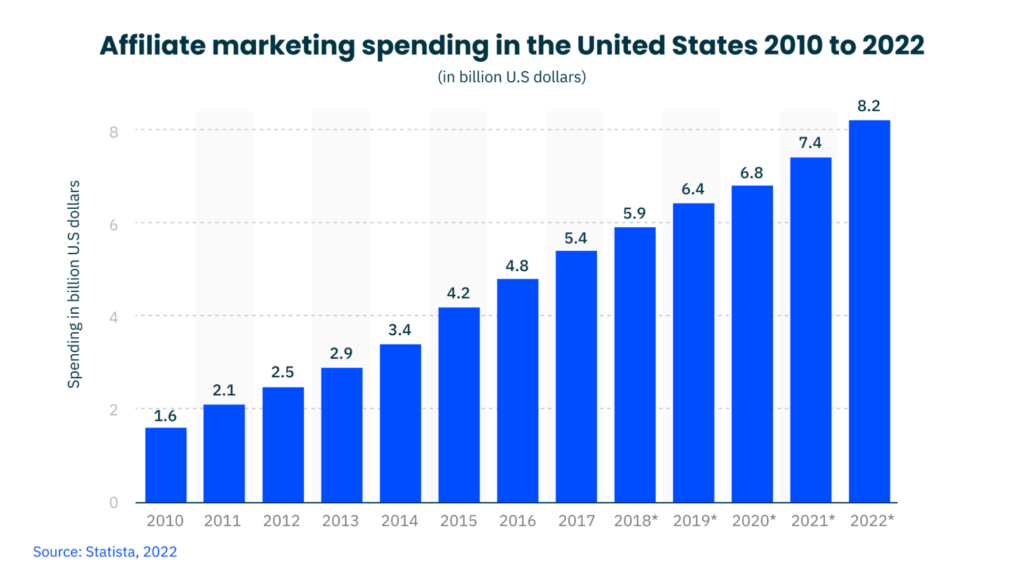
Because it is now a widespread type of advertising, the Federal Trade Commission (FTC) has developed consumer protection guidelines. At the core of these affiliate marketing rules is the idea that consumers should be able to differentiate paid promotion from non-sponsored endorsements and content. This is why many social media platforms enable creators to add tags to their content to indicate it is an ad.
Affiliate marketing examples
Affiliate marketing can take many forms, and we’ll cover some common examples here.
If you’re 1 of Instagram’s more than 1.2 billion users, you may have seen influencers’ affiliate marketing posts. The influencer posts content and shares a link to the brand’s store or website. The influencer’s unique tracking link allows the brand to identify purchases from the affiliate post. The influencer receives some commission for sales.
Blogs and review websites are another common path for affiliate marketing. The publisher posts content about either the product or something related to the product. Again, the unique tracking link means that purchases made from this promotion are used to calculate commission payments for the blog or website.
Here’s an example of a product review from the Wirecutter, a popular review site from the New York Times:
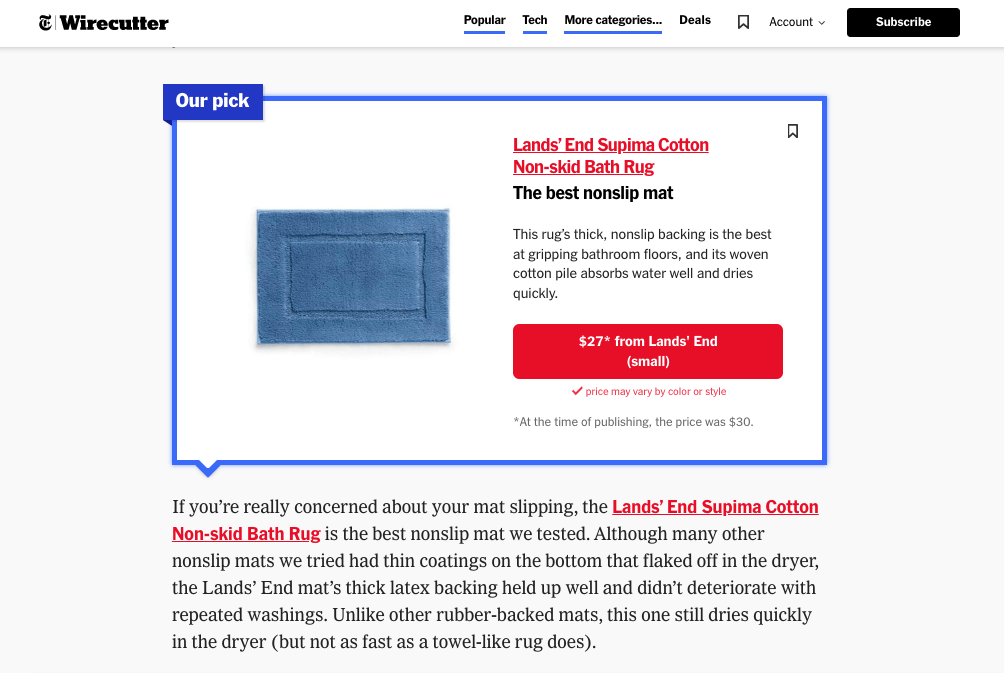
Like affiliate marketing, podcasts have exploded in popularity over the last decade. Because of the conversational nature and amount of time spent listening to their voices, listeners often feel like they have a personal relationship with podcasters. It’s this feeling of trust and familiarity that brands hope to capitalize on.
A podcaster might mention products in an episode and tell listeners to either use their unique discount code or click on the link in their podcast episode notes, and the brand can track the purchases that happen as a result.
Finally, some affiliate marketers simply create their own ads for products and services. A creator might design or create ads for Google or social media and then pay to have those ads appear in front of targeted audiences. The affiliate makes money as long as the commission they receive is greater than the ad spend.
How affiliate marketers make money
Affiliate links are the bread and butter of the affiliate marketing world. When you sign up for an affiliate marketing program (which is usually free to join), you’ll receive a unique affiliate link or have access to a tool to create links for individual products.
For example, if you’re promoting a specific baseball glove on Amazon, it’s much easier for people to purchase when you link directly to the product page. Most affiliate links include cookies.
Cookies are small files that identify your computer to improve the online experience. For example, let’s say you’re browsing an ecommerce site and view a product but then leave the site to check your email.
A cookie will allow the website to recognize your computer when you return to the site later. This can then be used to personalize your experience by displaying the product you last viewed.
As an affiliate marketer, cookies are your friend—even if someone follows your affiliate link and leaves without buying, you’ll still earn a commission if they come back to the site and make a purchase later.
But cookies don’t last forever. Brands decide how long purchases will continue to be linked to the affiliate. The cookie could expire in 24 hours, 30 days, or whenever the brand specifies.
For example, Etsy offers a 30-day cookie for its affiliate program:

Affiliate marketers are usually paid by commission, meaning that how much they are paid depends on how well their promotion works. The commission, however, can be paid based on various factors.
Commission based on sales is perhaps the most common payment model—it’s how most ecommerce merchants pay affiliates. Sales commission rates vary wildly, but most are between 5% and 30%.
An affiliate merchant might also pay their affiliates a designated amount for each signup or lead they generate. Marketers of apps or software might also get paid per install.
Payouts often take place at a monthly rate or some other regular interval. Usually, the brand makes the rules and pays affiliates through PayPal or other online means.
Types of affiliate marketing
There are a few main types of affiliate marketing. They’re defined by what relationship or expertise (if any) the affiliate has.
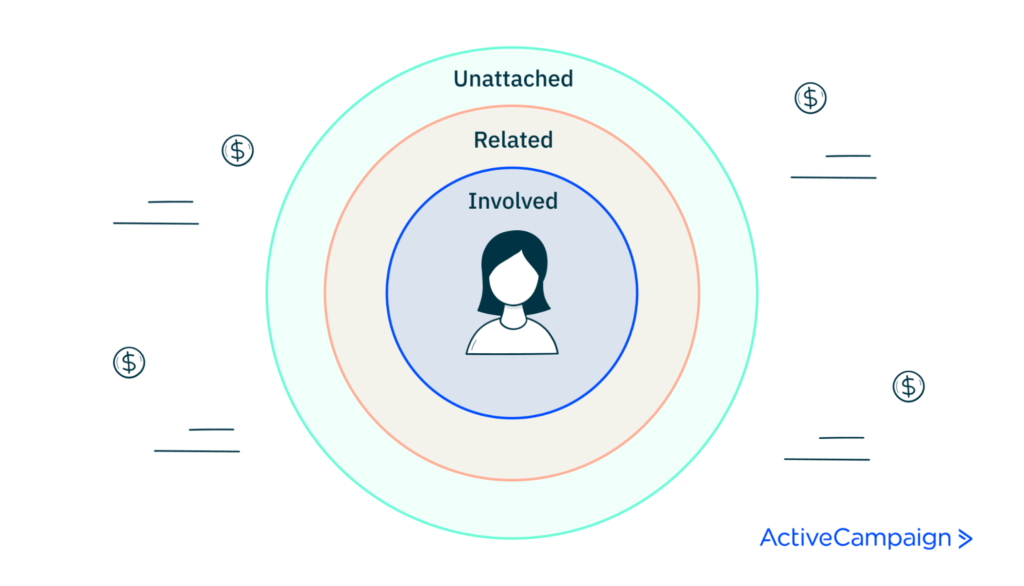
Let’s take a look.
Unattached affiliate marketing
Unattached affiliate marketing is when the affiliate promoting the product has no expertise or connection to the product. The advantage of this approach is that the affiliate doesn’t necessarily need to have a devoted audience. One way to use unattached affiliate marketing is for the affiliate to create digital pay-per-click ads or microsites to sell the product or service.
Related affiliate marketing
Related affiliate marketing is when the affiliate promotes products that they haven’t necessarily used but that relate to their niche or expertise. Those practicing related affiliate marketing tend to have an existing audience that trusts their taste and feels a personal connection to them.
For instance, a photography blogger might mention (and link to the product page of) a new camera they haven’t used. Even without an explicit endorsement, the inherent risk is that the affiliate might promote a subpar product and lose their audience’s trust.
Involved affiliate marketing
Involved affiliate marketing is when affiliates promote products they actually use—a more personal and authentic way of promotion. It can be very effective, but the affiliate is also putting their reputation and influence on the line.
For example, The Hiking Life is a blog about hiking. In their post about the Schladminger Tauern High Trail, they mention and link to the hiking gear they used.

Involved affiliate marketing requires not only that the affiliate build and maintain a devoted audience but also that they try the product. They may then devote a significant amount of time to creating content about their experience with the affiliate product.
How to become an affiliate marketer
One thing that makes affiliate marketing an attractive side hobby or side business is that the barrier to entry is very low. Many businesses have existing affiliate programs and pages where you can sign up for free.
Your application often must be reviewed and approved by the brand, but the requirements can be very flexible. For example, to apply to become a Shopify affiliate marketer, you need to:
- “Own and run an active website”
- “Have an established audience”
- “Create original content, such as online courses, seminars, blog posts, or videos”
To join ActiveCampaign’s affiliate program, you only need to create an account and fill out a short form. The ability to outsource work is a key benefit for affiliate merchants, so many have created FAQ pages and easy self-serve signup processes.
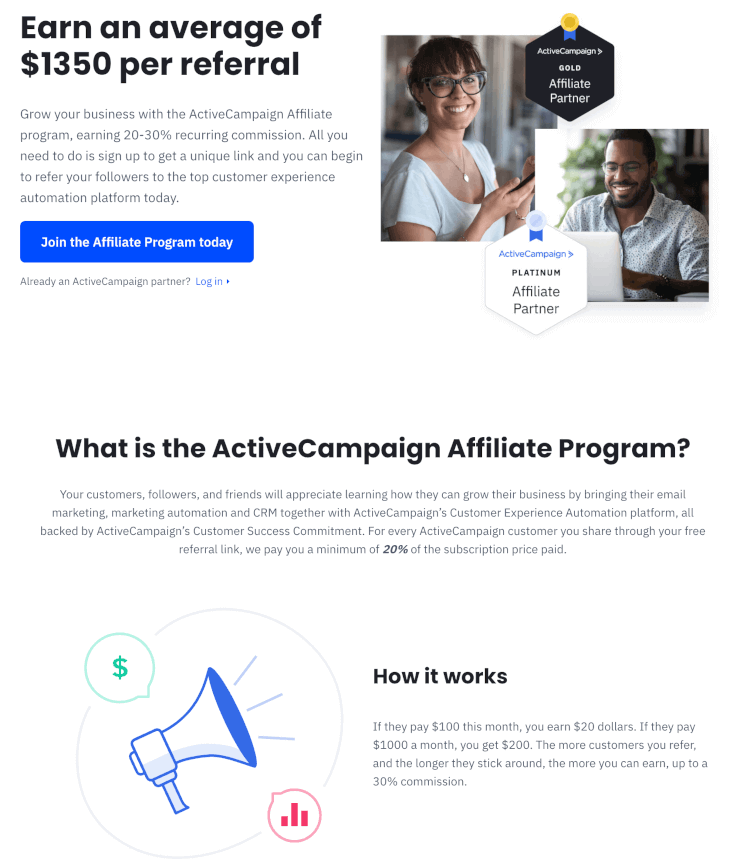
You can also begin by signing up with an affiliate network, like ShareASale or CJ Affiliate. Affiliate networks are a way of connecting with many different brands for affiliate marketing. They can help you track and collect payments and offer analytics and publishing tools.
Once you’re connected to merchants and can access affiliate links, it’s time to do the hard (but fun) part: marketing. This is where you create ads, social posts, blogs, videos, or other content to drive people toward purchasing from your affiliate merchants. The best way to be a successful affiliate marketer is to use your expertise, skills, and audience.
Yes, you can set up pay-per-click ads for unattached affiliate marketing, but you’ll have greater and more lasting success if you find your niche and provide value.
Find your niche
Because the Internet and digital media connect people with similar interests worldwide, it’s never been easier to become an influencer. You can create a YouTube channel and gain an audience interested in your DIY and upcycling projects.
You can start a blog about your experience working from home and grow a following of working parents. You could create an Instagram account highlighting your favorite sports cars and end up with thousands of people following you.
When trying to find your niche, consider the topic or industry and the channels you engage in (more on that later). Your niche will be something you have a lot of knowledge or experience with and, preferably, something you’re passionate about.
Provide value
Once you have a niche, you can create quality content that gets people following and engaging with you. If you’re a writer, try creating a website or blog. Video creators can use YouTube and social channels. Or maybe you can start an email newsletter with a mix of content.
However you’re sharing your content, you have to provide value to acquire and retain an audience’s attention. For example, if you start that upcycling and DIY YouTube channel, you can create videos on how to strip paint from furniture or show viewers exactly how you refurbished that coffee table. You’re providing your viewer’s knowledge and entertainment.
Sometimes, providing value simply means posting a cool muscle car on Instagram every day. At the core, you implicitly make a promise to your audience and deliver on it consistently. One of the first tips for building a following as a content creator is to set a publishing schedule and stick to it.
Add your affiliate links
It usually takes time to build an audience, but once you have even a small following, you can start adding affiliate links to your content. These could be simple mentions of a product, or you could create content about the product you’re marketing. Review websites like Wirecutter evaluate products, and suggest their favorites with an affiliate link. Buzzfeed’s entire shopping section is full of lists of loosely related affiliate products, often quoting public Amazon reviews.
How to become an affiliate merchant
If you’re already a business owner, affiliate marketing can significantly expand your audience and diversify your marketing. However, becoming an affiliate merchant is its own process. If you have co-founders or other important stakeholders, you may need to start by forming a consensus with them.
Joining an affiliate marketing network is an easy way to publicize and run your affiliate marketing program. This network will connect you with appropriate affiliate marketing partners and can help with operations and payments.
Of course, you can also create your own in-house affiliate network, which is what Amazon did:
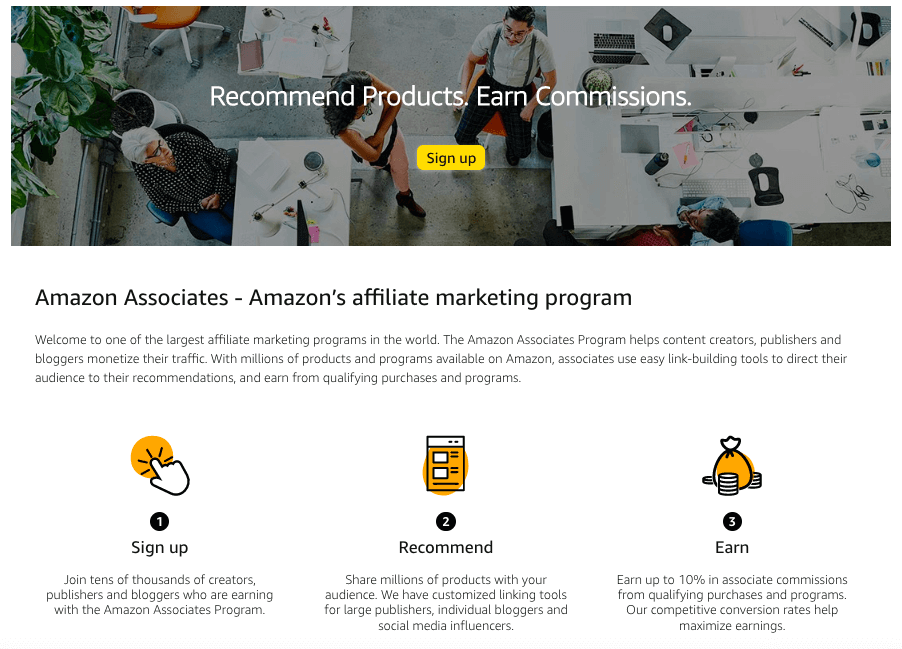
Next, decide on your payment structure or commission rates. They can be very simple in the beginning, but you may decide to adjust them as your program grows and evolves. Once you’ve established your payment structure, you need to promote your program and make it easy for potential affiliates to learn about it and sign up.
Setting up and running an affiliate marketing program as a merchant does require some upfront effort. Still, the payoff is that your affiliates can eventually provide new marketing initiatives and audiences with little effort on your part.
Best affiliate marketing channels
Affiliate marketing can be done in many ways, but the majority occurs through just a few channels. Here, we explain what those channels are and how they work.
Blog or website
Nowadays, creating a blog or website is easier than ever.
While there are free options, you can now host a website for just a few dollars a month. The hurdle is no longer creating and launching the blog or website—it’s getting found on the Internet and building a loyal audience.
Search engine optimization (SEO) and search engine marketing (SEM) are extremely important for getting eyes on your site. When using blogs and websites for affiliate marketing, your content is the first product you have to sell.
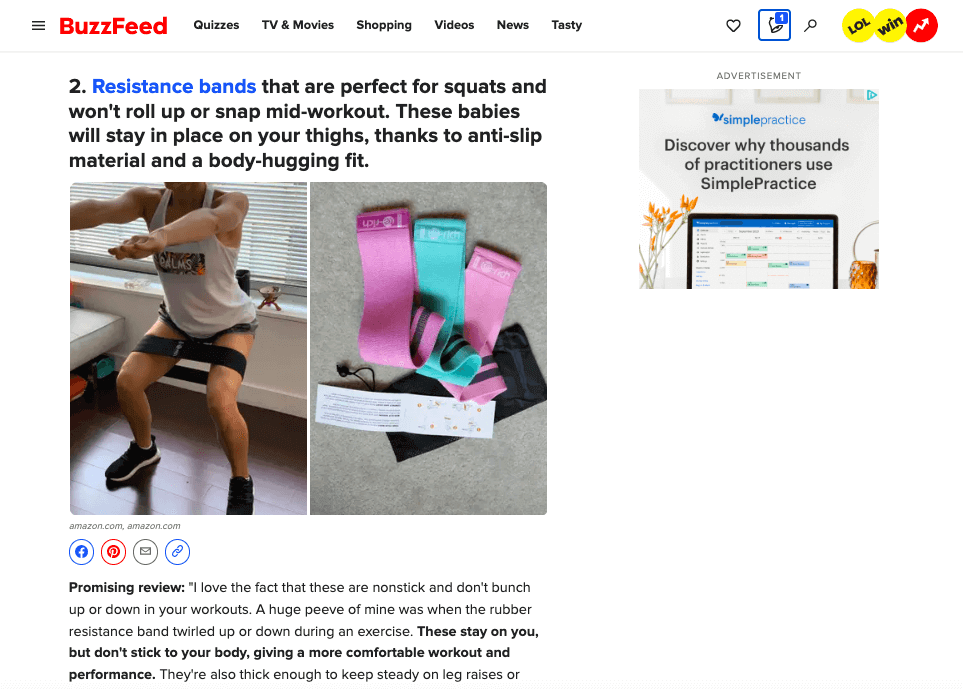
Once you have an audience or start ranking for search terms, there are a number of ways to add affiliate marketing. This channel works for unattached, attached, and involved affiliate marketing.
Just about any website has affiliate marketing potential.
A cooking blog, for example, can link to ingredients and utensils. The example below includes a recipe for chocolate chip scones and links to an Amazon page to purchase the necessary tools.
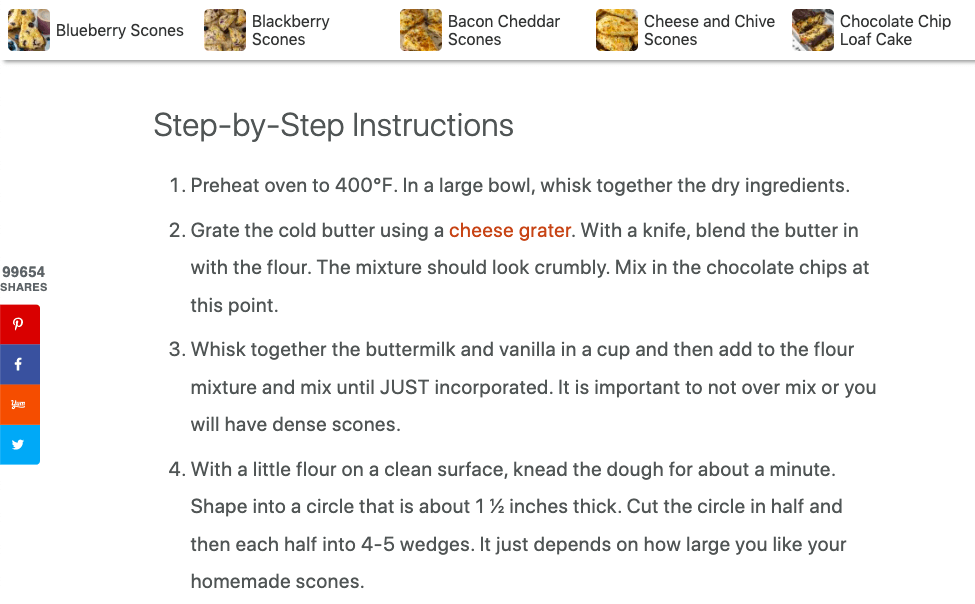
A fitness blog can link to athletic equipment and nutritional supplements. A blog about video games can promote games and equipment.
Email newsletter
More and more individuals and organizations are focusing on email newsletters as a tool for growing and retaining an audience. The first step in successfully marketing through a newsletter is collecting email addresses.
This can be done in many ways, such as:
- Creating a lead magnet
- Adding a signup form to your website
- Reaching out to individuals
- Linking to your signup form on social media
The key is finding your niche and providing value. You need to offer valuable content to grow your email list, hold on to subscribers, and generate engagement. After all, you need readers to open your email and click through with your affiliate link.
Cut down on the back and forth with our FREE content marketing templates!
Social media
Social media comprises many constantly evolving ecosystems, incorporating the platform itself, the users, and the way they interact. As challenging as it can be, there are always new opportunities on social media to start or join trends, innovate with content types, and even be an early adopter of the next big platform.
The social media channel you use may be informed by the topic or industry you specialize in. Each social media channel has a different audience; for instance, Pinterest might be ideal for an interior decorating creator, whereas Instagram might be better for a cosmetics affiliate marketer.
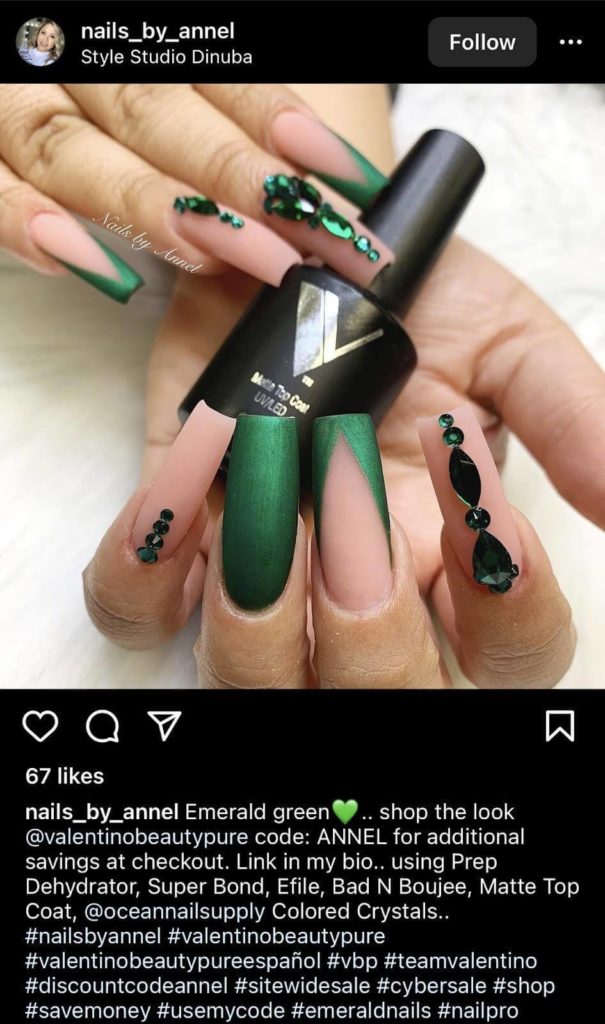
Your social channel of choice will also depend on the kind of content you want to make. If you’re a pro at verbal quips, Twitter could be your home. If you love making short videos, TikTok might be better.
Whatever social platform you use, it’s important to understand how you can link to merchants and what kind of disclosure tools and requirements the platform has.
On YouTube, for instance, creators generally place their affiliate links and disclose that they’re compensated for referral purchases in the description box below the video.
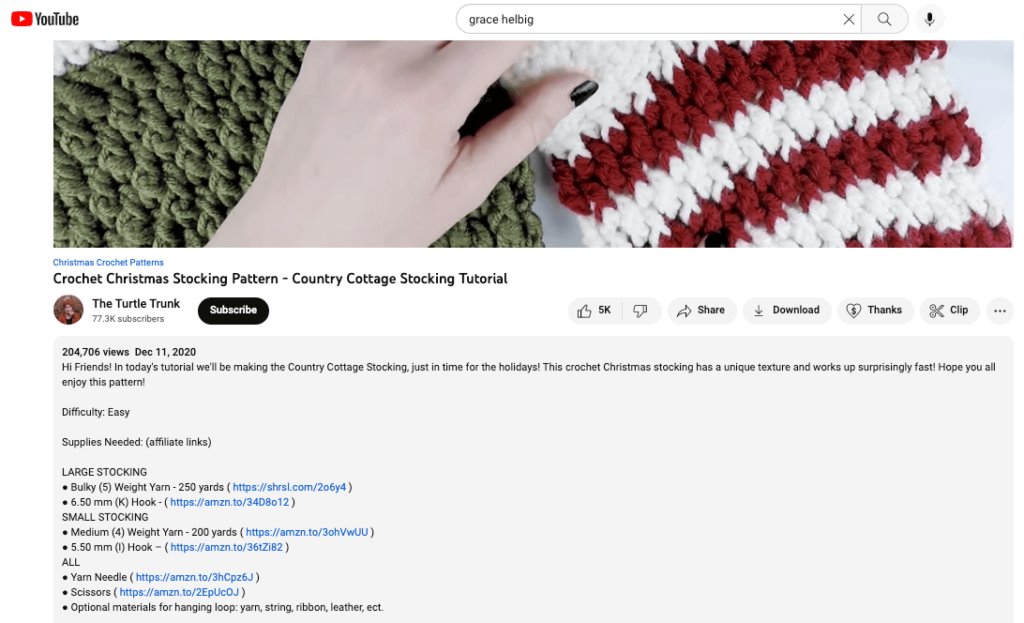
Check out FTC’s endorsement guides for more information.
Frequently asked questions
Let’s cover some of the most common questions about affiliate marketing.
Is it worth it to do affiliate marketing?
In most cases, the answer is yes for both merchants and affiliates. Affiliate marketing can be used to promote all types of products and services. For affiliate marketers, the startup costs (if there are any) are negligible.
The greater investment is in creating content and building your audience. For merchants, starting an affiliate marketing program takes some investment, but this investment can lead to consistent and diverse marketing with little effort on your part.
How much does affiliate marketing cost?
For the brand or merchant, affiliate marketing typically costs a small commission or percentage of what the affiliate sells. Affiliate marketers can get started for free but may also pay for website hosting, ads, and more.
How do I become an affiliate marketer?
Many businesses have existing affiliate programs and forms through which you can sign up. Look for them on the “About” or “Contact Us” pages. You can also sign up with an affiliate network, connecting you with many merchants.
Get started with affiliate marketing
The affiliate marketing industry continues to grow and evolve.
Because it’s so varied, there’s a place for almost any industry or niche. An affiliate marketer’s greatest challenge is finding their niche and channels and building their audience.
As a brand, affiliate marketing allows you to expand your audience through your affiliates and drive more revenue. It opens up new possibilities and requires minimal effort from the brand itself.
If you’re looking for a high-value affiliate program, check out ActiveCampaign’s partner program. You can earn 20-30% recurring commission by sharing our powerful marketing automation suite.

